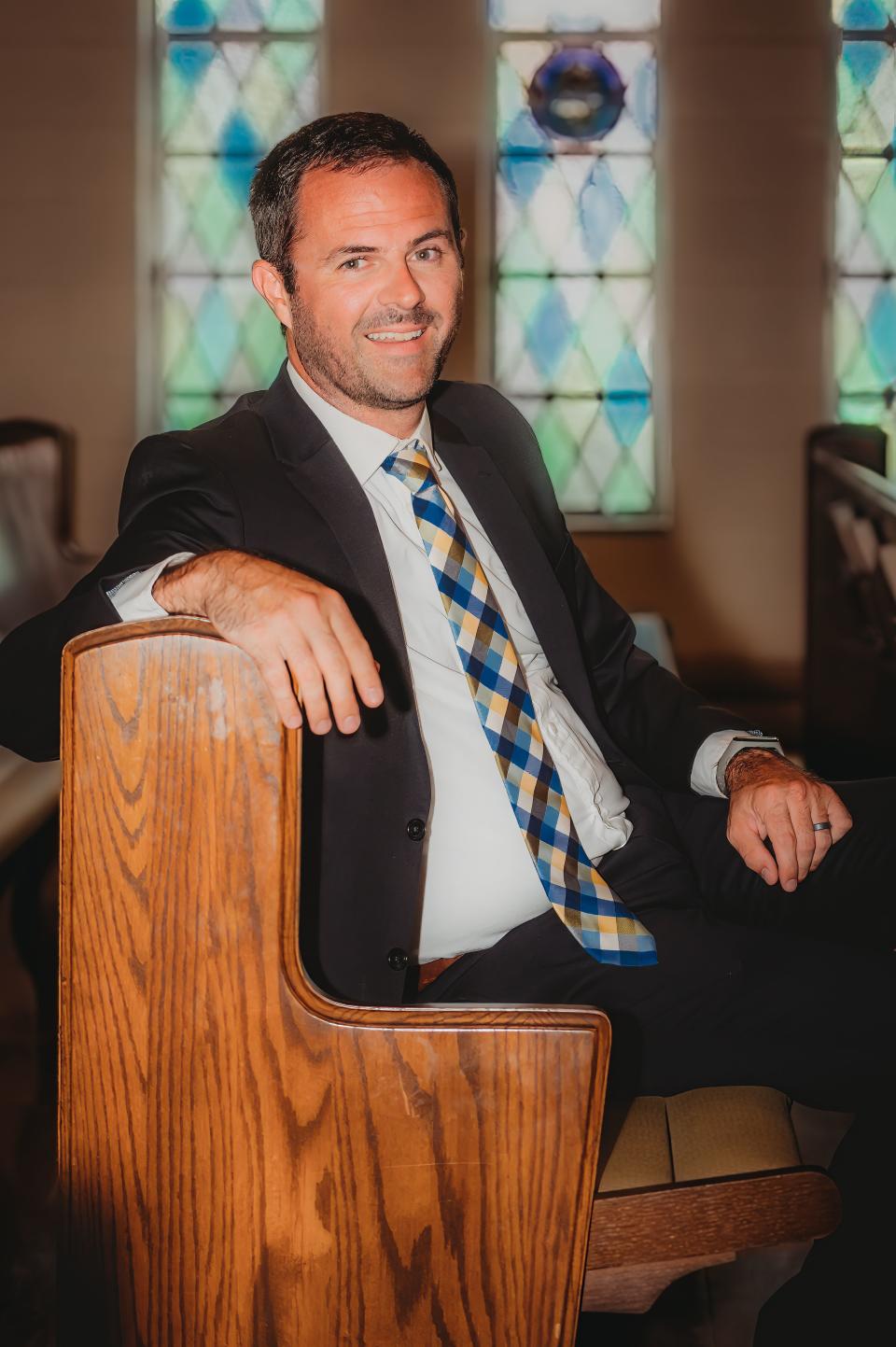America is experiencing a ‘great dechurching.’ What’s happening to all the church buildings?

When the congregation of Community Covenant Church decided to close its doors forever, only about 12-15 people were attending services regularly. The decision to close wasn’t an easy one — the church, in the suburbs of Boston, had been founded in 1907 by working class Swedish immigrants who had faithfully given their time and money to the church for decades.
The actual closing, however, was difficult in an unexpected way.
In order to maximize the value of the property, the church sought a change in zoning from residential to commercial. The change was denied, in part because of opposition from people who said they didn’t want the character of the neighborhood to change.
Church member Mary Overholt knocked on doors, trying to get support for the rezoning. One man told her he loved looking out from his house at a church. But he and others who liked having a church in the neighborhood weren’t motivated enough to join it.
This paradox is playing out as churches close across the world. Like the man Overholt spoke to, people like the idea of churches; they appreciate their beauty, the community meeting space that some provide, and their charitable work and donations. Many don’t want churches razed or turned into nightclubs or hotels, as is happening in some cities in Europe.
But with notable exceptions — Utah, for example — people aren’t going to church like they did a generation or two ago. And as congregations dwindle and their church buildings close, their towns are left with the problem of what’s going to be in that space — as their pastors wonder what to do with church furniture and supplies, like kneelers and collection plates.
There aren’t just social problems caused by the “great dechurching” but physical ones, as well.
“What do you do with the choir robes? What do you do with hymnals? What do you do with extra Bibles?” asked Ryan Burge, a social scientist who studies the decline of religion and is also an American Baptist pastor leading his own small congregation in Illinois through what is likely its final months.
“We have 125 place settings for church dinners that used to happen in the 1970s and ‘80s; we haven’t used them in 30 years. What do you do with them?”
Burge’s research on the declining levels of religious participation provides the basis for the new book “The Great Dechurching” by Jim Davis and Michael Graham. While the book starkly describes trends that have led to the existence of what Burge ruefully calls “hospice pastors,” the authors remain hopeful that church attendance can yet rebound.
Until then, there are plenty of churches for sale.

Who are the ‘dechurched’?
In “The Great Dechurching,” Graham and Davis say that America is seeing in real-time “the largest and fastest religious shift in U.S. history,” with some 40 million people — 1 in 6 Americans — having stopped going to church in the past 30 years. “That’s a lot of people who have changed their rhythms and habits,” Graham said in an interview.
The losses in church going, Graham and Davis point out, are greater in number than the people who came to faith during the First Great Awakening, the Second Great Awakening and all the Billy Graham crusades combined.
In Orlando, where Graham lives, 42% of residents have stopped attending church within the past 25 years. “That’s a lot of people who have changed their rhythms and habits,” he said in an interview.
Graham, the program director for The Keller Center for Cultural Apologetics, defines the “dechurched” as people who used to go to church at least once a month and now go less than once per year. So these people aren’t even going to church on Christmas and Easter, he noted.
“In sociology of religion, there are three ‘B’s that are important — that’s belief, behavior and belonging,” said Graham, a former pastor. “A lot of what’s been written over the past few decades is more about belief and behavior, but affiliation and attendance is more about belonging. All three of those things mutually influence each other in complex ways, but we are looking at belonging as the primary lens.”
The decline in church attendance matters, “even if you’re a total atheist and have been unchurched your entire life and don’t care about these things. There’s still a significant impact here when you’re talking about this many people.”
Forty percent of the social safety net in America “is downstream from houses of worship,” he said. The loss of the sense of belonging, many sociologists believe, is contributing to the rising numbers of Americans who say they are lonely.
People in dwindling congregations can still sustain relationships as a church grows smaller, but it becomes harder to maintain the church facilities with diminished contributions, and even to keep providing services to the community.
Burge, author of the 2021 book “The Nones,” which is about the growing number of Americans who don’t identify with any religious group, has said, “The future, if you’re a church, is not looking rosy for you.”
Related
Who will miss you?
As Burge’s own congregation shrank (one recent Sunday, just six people were at the worship service), one member asked what seemed like a pivotal question: Who, outside the congregation itself, would miss the church if it closed?
With no clear answer to that question, the church set out to create a ministry that would make it invaluable to the community, and began providing brown-bag meals for local school children. The program was successful, but eventually became too much for the small congregation to handle. They recently turned it over to another group.
Similarly, the members of Covenant Community Church in Hopkinton, Massachusetts, tried to keep up programs such as a living nativity during the Christmas season, even partnering with another church. But Overholt says that although, at the end, the church was “super small and, to be honest, run by volunteers who were a little bit tired and getting a little bit burned out,” they’d seen God answer prayers. “We didn’t have a huge impact on the community, but we did the little that we could,” she said.
Although some so-called megachurches (churches with 2,000 or more members) are continuing to see growth, “half of all churches have fewer than 65 people in their weekly worship service,” LifeWay Research reported in 2020.
Many of those people are sitting in sanctuaries built to hold 200 people — and for this type of real estate, it’s not a seller’s market, as the pastor of a closing church can quickly find out.
Many older church buildings don’t meet current building standards, and a new owner would have to significantly upgrade them to, for example, be ADA compliant. A new congregation trying to make a go of it often can’t afford the cost of the building, let alone the improvements required, Burge said. (And there are still churches being formed in the age of dechurching. In 2019, the latest year for which LifeWay has data on church openings and closings, about 3,000 new Protestant churches opened while 4,500 closed.)
Anticipating what seems inevitable, Burge tried to sell his congregation’s property, which has 16,000 square feet and sits on 9 acres on a “prime highway” in Mt. Vernon, Illinois. The best offer was $150,000.
However, Burge found a solution that worked for his congregation and community. The church gave its building to a local Christian school, and the church and school will share the facility until the church closes for good — probably sometime in the next year, he said.
‘The remains of the church’
Most church buildings and real estate will ultimately find a new purpose, although it might not be one that sits well with the community or with people of faith. Fortune magazine reported earlier this year on the repurposing of grand churches in Europe, and the uneasiness some people have with formerly sacred spaces turning into breweries and climbing walls.
In many cases, elements of the church are being preserved, as at a former Catholic church in Brussels that is now home to a climbing club. (Catholic churches must be “deconsecrated” before they can be used for another purpose, which must be approved by a bishop.) The co-founder of the club spoke to a reporter about feeling “the presence of the remains of the church,” which seems apt, since something both real and intangible seems lost when a church closes.
Browsing the website usedpews.org, billed as a “Craiglist for churches,” you can get a sense of how the “great dechurching” will upend the businesses that have long supplied houses of worship: “Free blue pews. Wrapped in plastic, ready to go.” A baptismal heater. A mahogany communion table.
Some of the churches selling supplies, of course, are doing so because they are remodeling, a visible sign of their hope. Community Covenant Church was once in that space; anticipating growth, the congregation built an addition in 2007.
Cultural headwinds
Burge now counsels churches to set goals that are not about growth, saying that faith groups are “facing more headwinds than we ever have before.”
Some churches face these headwinds by joining forces, like two congregations in Memphis that merged earlier this year. Others are opening their buildings for other purposes, like a United Church of Christ congregation in Newton, Massachusetts, that shares its space with arts and music organizations, a pediatric occupational therapy clinic, and a Jewish congregation.
Related
Davis and Graham, however, remain optimistic, pointing out that millions of Americans who have stopped going to church are what they call the “casually dechurched” — people who didn’t have any great falling out with God or their religious tradition, but who simply stopped going to services out of inertia, or a change in life circumstances, like a move or divorce.
“The good news, and the reason we’re incredibly hopeful, is that over half the people who have left houses of worship are willing to return right now,” Graham said, “and the reasons they’d be willing to return is just as basic as why they left. They just want to be treated well, on an individual basis, and they want to have a good relationship with the church as an institution.”
A sacred task?
Of course, there are other factors at play, particularly when an individual church is already on life support. Churches like Burge’s or Overholt’s, where a congregation is largely comprised of senior citizens, may have a hard time attracting young families. Some people may choose megachurches with contemporary music instead of pipe organs. And as Burge points out, small churches often close simply because so many members have died over time.
While there still may be heartbreak involved, sometimes closing a church can be a calling when it is undertaken with much consideration and prayer, Overholt said.
After years of trying to maintain Covenant Community Church, by trying to merge with a larger church and even reducing the pastor’s hours, some in the congregation came to believe that growth wasn’t its calling — that closing might be what God was asking the church to do.
In a letter published in the local newspaper, Overholt wrote, “Our culture values success, and even churches compete to provide a ‘product’ that will attract the most ‘customers.’ So, for many the closure of a church might be considered a failure.
“But it is never a failure to listen and get direction from the Spirit and to lay down your own desires for the good of others. In this case, the funds from the proceeds of the sale of the building will go to plant new Covenant churches. The church sensed God smiling on them in their decision,” she wrote.
As of this week, the church is still for sale.

